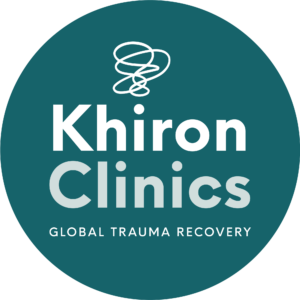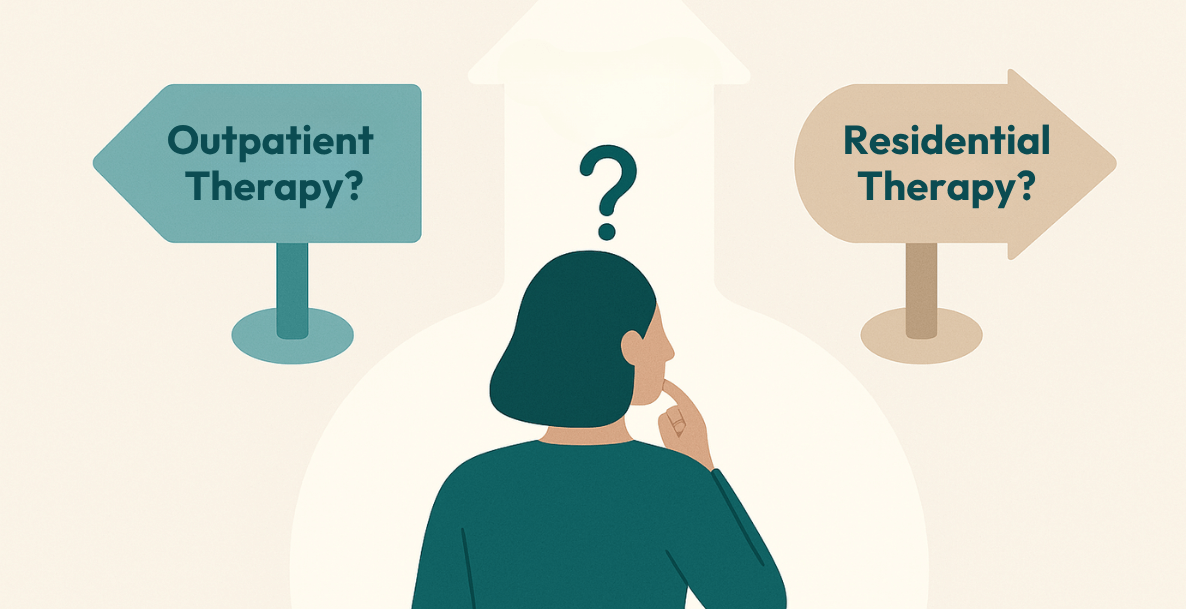Sensory overload or what is essentially a severe and prohibiting hypersensitivity to outside stimuli often goes hand in hand with anxiety, so it’s essential to understand and deal with both aspects to avoid being overwhelmed and, at worst, paralysed by the condition.
People living with PTSD can be particularly prone to sensory overload, which can have a major impact on the normal functioning of brain processes if not identified and treated. The impact on a happy, healthy life is the same, regardless of the original trigger for the anxiety or sensory overload, and there are strategies to help restore equilibrium and quality of life.

Download the Brochure
Discover Our Innovative Trauma Recovery Pathway
As with so many mental health conditions, sensory overload is related to the reptilian brain and the fight, flight or freeze (FFF) responses to calamity or what we perceive as a calamity. When we are overwhelmed, our five senses (sight, sound, smell, touch, and taste) tend to become over-sensitised, which causes our brain to become overwhelmed or overloaded by the amount of data being submitted. This is a bit like trying to stuff more clothes into a trunk than it can physically handle until something has to give, or to use a more 21st Century analogy, running out of RAM, which makes everything just seize up. When this happens, it causes a sense of anxiety, panic, and a general feeling of being unsafe, and during sleep can give rise to nightmares which then exacerbates problems in waking hours.[1]
Regardless of whether the anxiety or the sensory overload has come first, the outcome is the same; the sufferer will frequently find themselves in situations and settings that will trigger their symptoms or an episode. Several conditions are linked with sensory overload, but it is highly common for people with Post-traumatic Stress Disorder (PTSD); for instance, soldiers who are easily tripped into FFF responses by, for example, loud noises, strobe lighting, or fireworks, which can cause a meltdown. People who have suffered sexual or other forms of physical abuse and violence, accident survivors, or even people who have lived through natural disasters can all develop PTSD [2].
Brought about by a traumatic event that the person has associated with the possibility of death or grave injury at the very least, the condition can become highly debilitating, quickly sparking an episode and triggering the preferred coping mechanism of the sufferer. It’s worth noting that the event may not be traumatic for someone else, so it’s about perception and context. The problem with this is that it becomes exhausting as this hypervigilance is based on a faulty detection system which causes the sufferer to feel worried or frightened when there is no actual threat to life and limb. To use another analogy, it’s like that annoying alarm on your neighbour’s car that is frequently set off by another vehicle just driving by (usually at 2am!) or someone bumping the car as they walk past.
The Brain and Trauma
Trauma experts like Dr. Bessel van der Kolk and Professor Stephen Porges describe the brain actually being altered as a coping response to traumatic events, especially those that are sustained or repeated in nature, which is a neurobiological, chemical response and nothing to do with personal resilience or fortitude.[3] Due to the trauma, future events are responded to in a similar way, in the form of a variation on a theme (different triggers but a standard response) because it is comfortable for the brain, which has, in effect, become stuck in a loop.
Signs and Triggers
Like most things, the signs of sensory overload can span the spectrum from the very obvious to the more subtle or less easy to correlate. For instance, someone placing their hands over their ears, attempting to flee or fainting at the sight of fireworks might be pretty obvious, whereas a general inability to relax or being highly restless might not. In children, this might spark a tantrum which may be misinterpreted as receiving a simple shock when it is, in fact, sensory overload. In general, witnessing a hyper response or high levels of anxiety or, at worst, panic, which is quite different to the normal reaction in others, is usually a pretty good indication. However, some symptoms such as a racing pulse and pounding heart or dizziness won’t be visible to others. In general, symptoms fall into four categories:
- intrusion
- arousal
- avoidance
- thoughts and feelings, which are usually negative
Triggers can vary depending on the way the PTSD presents and whether the sensory overload is also related to another condition such as autism or ADHD, but common triggers include:
- being caught in a crowd.
- loud and/or shocking noises such as fireworks or helicopters.
- strong scents which can remind the sufferer or people or situations they identify as stress-inducing.
- inappropriate or unwanted physical contact or proximity.
- restrictive or otherwise uncomfortable clothing.
- flashing lights such as strobe lights or fireworks.
- extreme temperatures, especially sudden in nature.
- certain individuals or groups.
Explore Our Treatment Options
Find Out What Makes Us Different
The staff at our globally recognised mental health clinic have been informed, trained and supervised by some of the world’s leading trauma experts such as Dr Bessel van der Kolk, Dr Janina Fisher, Dr Stephen Porges, Dr Dick Schwartz and more.
How Do We Clear the Cache and Delete the Trauma Cookies?
Obviously, the easiest route to avoiding a stress-induced episode is to avoid it, but unless we resign ourselves to a solitary life, living indoors with limited stimuli, the chances are that we are going to encounter new and stressful situations – and your sensitivities could actually increase. While this is a challenge even for non-PTSD sufferers, for those with PTSD, it can be debilitating and can prevent them from living full lives and even precipitate comorbidities such as substance abuse. Mastering breathing techniques for relaxation and learning to meditate can be invaluable in situations where you feel your pulse rate start to increase.
Sleep also plays an integral part in the body’s capacity for resilience (the more tired you are, the more sensitive you will be), as does eating healthily, cutting down on salt, exercising, and drinking plenty of water.[4] Avoiding stimulants like nicotine, coffee, alcohol, and illegal drugs is also recommended. In some cases, medication can be helpful though all the factors in your condition need to be considered and viewed holistically and empathetically by a healthcare specialist who can take all of the elements into account.
Other recommended strategies include:
- When out and about, choose more quiet periods and less buzzy environments such as restaurants if eating out.
- If holding a meeting, try to choose a quiet venue and ask people to speak slowly and in turn. If you don’t feel comfortable explaining the real reason, tell them that you have a hearing issue.
- If you feel one sense overloading, try some distraction tactics like relaxing music or eating something with a strong flavour like chilli or peppermint. Experimenting with smell in the form of aromatherapy (including candles) can also be helpful, and there are a multitude of essential oils to choose from.
- Deep pressure can remove the focus and place it somewhere else, for instance, on the steering wheel of your car by squeezing some wrist grips, or the most fun way, giving yourself a hug.
- Embrace your inner Marie Kondo by living minimally, which not only helps with mental clarity but also reduces the risk of injury if overstimulated.
- Invest in some earplugs and/or headphones, so you choose what and when you listen to something.
- Have some white noise like a fan or something on quietly in the background like a radio or TV.
- Sunglasses or tinted glasses depending on the stimulant can aid with visual over-stimulus.
- If you find travelling stressful and you are not the driver, take the opportunity to nap.
Seeking support from your friends, family, and colleagues can also play a crucial part in helping you to circumnavigate triggers where possible. Choosing quiet activities in calmer settings instead of crowded restaurants, concerts, theatres (where you might also be trapped in a row of people) would be preferable alternatives, and they need to know this. Securing appropriate advice and treatment for accompanying conditions is also key to avoiding one condition feeding off another. Again, a trusted medical or mental health professional can be invaluable in helping you to manage this very fine balance to live a full and satisfying life.
If you have a client or know of someone struggling to heal from psychological trauma, reach out to us at Khiron Clinics. We believe that we can improve therapeutic outcomes and avoid misdiagnosis by providing an effective residential program and outpatient therapies addressing underlying psychological trauma. Allow us to help you find the path to realistic, long-lasting recovery. For more information, call us today. UK: 020 3811 2575 (24 hours). USA: (866) 801 6184 (24 hours).
Sources:
[1] Tanev, Kaloyan S. et al. “Positive Association Between Nightmares And Heart Rate Response To Loud Tones”. Journal Of Nervous & Mental Disease, vol 205, no. 4, 2017, pp. 308-312. Ovid Technologies (Wolters Kluwer Health), doi:10.1097/nmd.0000000000000641. Accessed 18 July 2021.
[2] Clancy, Kevin et al. “Restless ‘Rest’: Intrinsic Sensory Hyperactivity And Disinhibition In Post-Traumatic Stress Disorder”. Brain, vol 140, no. 7, 2017, pp. 2041-2050. Oxford University Press (OUP), doi:10.1093/brain/awx116. Accessed 18 July 2021.
[3] van der Kolk, Bessel A. “The Body Keeps The Score: Memory And The Evolving Psychobiology Of Posttraumatic Stress”. Harvard Review Of Psychiatry, vol 1, no. 5, 1994, pp. 253-265. Ovid Technologies (Wolters Kluwer Health), doi:10.3109/10673229409017088. Accessed 18 July 2021.
[4] Baglioni, Chiara et al. “Sleep And Mental Disorders: A Meta-Analysis Of Polysomnographic Research.”. Psychological Bulletin, vol 142, no. 9, 2016, pp. 969-990. American Psychological Association (APA), doi:10.1037/bul0000053. Accessed 18 July 2021.





